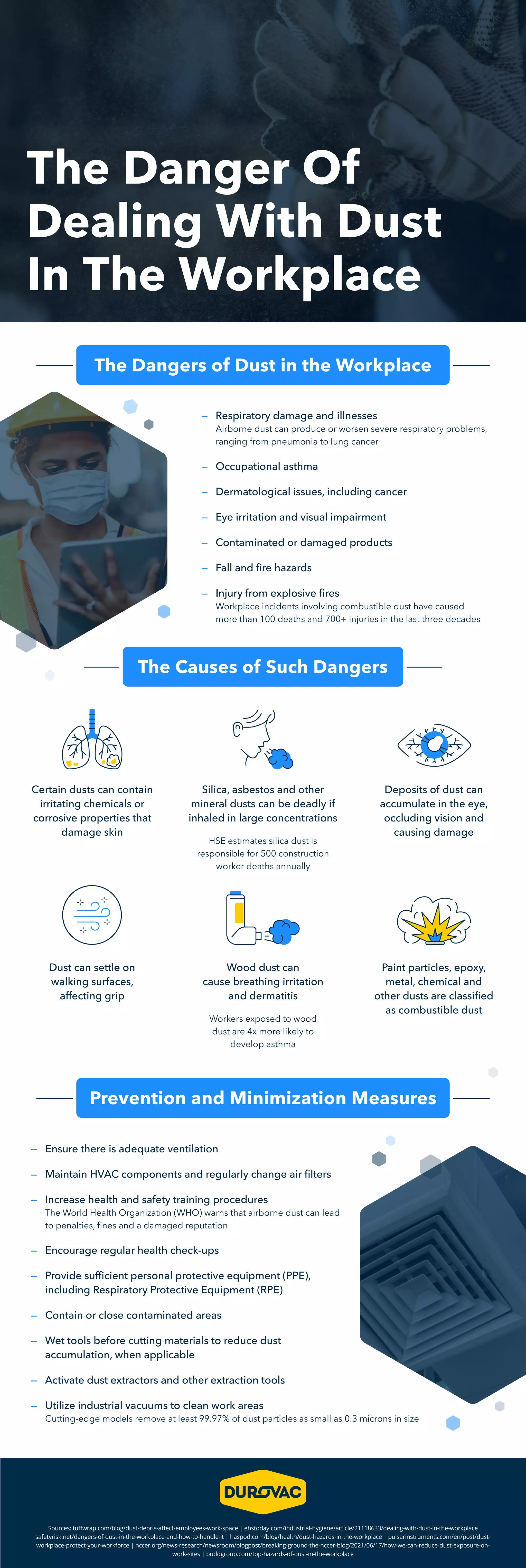While many would consider dust a respiratory threat, there are also situations in which dusts can become much more lethal. In industrial settings, for example, some dusts pose a threat due to their combustible nature. Much of the dust associated with certain agricultural products, metals, plastics and chemicals can become combustible under specific circumstances as well. What circumstances are those? Known as the “dust pentagon” due to its five parts, explosions can occur when combustible dust particles are either suspended in the air or confined in a limited space. Then, all that is needed is oxygen and an ignition source to culminate in catastrophe. Such dust explosions have occurred in various industries over the years, causing injury and death. How can businesses work toward avoiding these catastrophes, though? Prevention can come in the form of careful monitoring of airborne dust concentrations, installment of ample ventilation and assorted containment measures. Meticulous cleaning practices — such as regular utilization of industrial vacuums — can clear the air and reduce the risk of disaster simultaneously. For more information on the ways in which businesses are working toward reducing the risks of dust in the workplace, continue reading on to the resource supported alongside this post.
The Danger Of Dealing With Dust In The Workplace this resource was contributed by DuroVac, the leader in industrial vacuum systems















